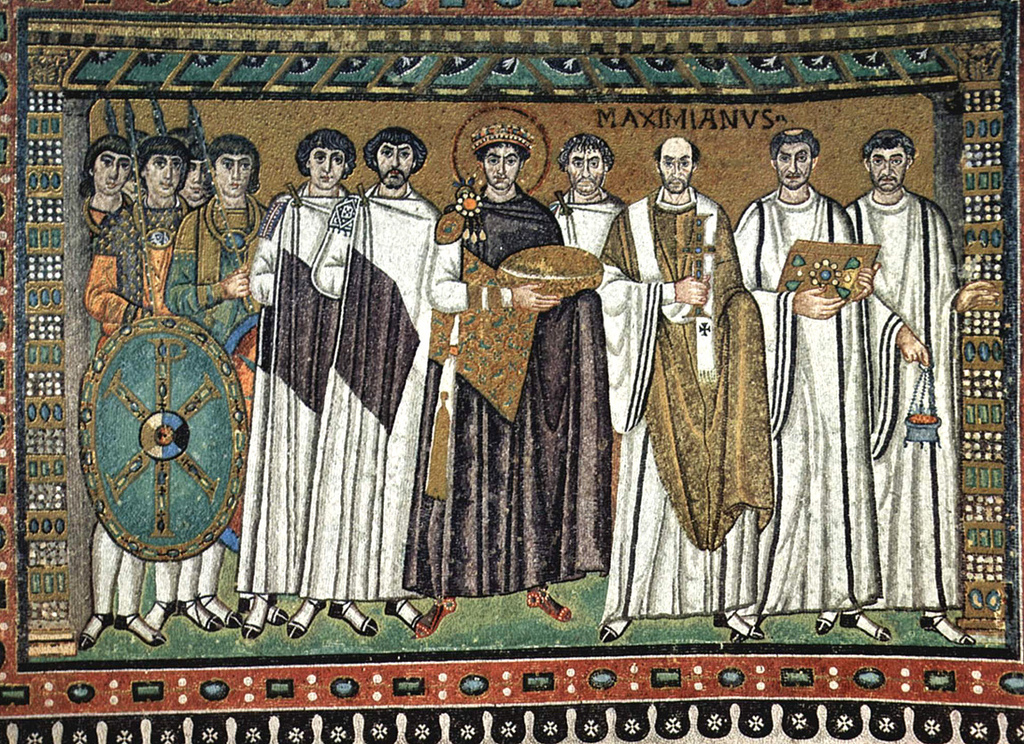Once again, I have sailed to Byzantium, this time under the guidance of Professors Aleksandar Jovanovic and Ian Rocksborough-Smith, who are hosting a second semester of their Rebels and Rulers film series. These documentary film screenings are what Jovanovic and Rocksborough-Smith hope will become a UFV tradition. Each one focuses on one or two noteworthy figures in history, some well-known, others obscure. Following the screening, attendees are invited to ask questions and share their observations about the subject.
This month’s presentation was on Emperor Justinian I the Great of the Byzantine Empire and his empress, Theodora.
Justinian was born to a provincial peasant family, and eventually rose to become emperor of the Eastern Roman Empire (or Byzantine Empire, as it is commonly known). During his rise to power, Justinian met Theodora. Theodora was a circus performer (as in circus maximus, chariot racing events). The two fell in love and got married, which caused quite a scandal. Considering that both were ambitious and of humble origins, they likely saw one another as kindred spirits.
When Justinian and Theodora took the throne, they inherited a broken and troubled empire. The entire western half of the empire, including Rome itself, had been conquered by barbarian invaders in the previous century.
In the early years of his reign, dissatisfaction from Justinian’s high taxes and banning of certain entertainments erupted into riots that burned down much of Constantinople. Justinian was ready to flee, but Theodora was determined to stay, preferring to die an empress than live as an exile. Motivated by Theodora, and with the help of their general Belisarius, they stayed and crushed the rebels.
After this, to salvage his reputation, Justinian embarked on an ambitious project: to rebuild the Roman Empire. In this, he was initially successful. Spearheaded by general Belisarius, the Byzantines reconquered Italy, North Africa, and parts of Spain.
But just as it looked as if Rome would be restored, disaster struck. A disease, known to history as the Plague of Justinian, swept through the empire, killing 40 per cent of its population. In the empire’s moment of weakness, their enemies attacked and undid much of their work. After Theodora’s death, Justinian retreated into his palace and allegedly spent the last 10 years of his life in religious pursuits.
Justinian is sometimes called “the last of the Caesars.” He was the last, best hope for Rome to prevent its own fall. After him, Byzantium, the direct successor to the Roman Empire, would know only decline and contraction until it was finally ended by the Ottoman Turks in 1453. According to the professors, his reign marks the real transition from the world of classical antiquity to that of the Middle Ages.
Next in the Rulers and Rebels series will be The Mystery of Champlain, about 17th century French explorer of North America Samuel de Champlain. The screening will be held in room B121, Abbotsford campus on Tuesday, Feb. 26, from 2-4 p.m.
Rulers and Rebels will be of interest to those who are interested in history. Students who are currently taking a history class taught by Jovanovic or Rocksborough-Smith will also receive extra credit for attending the events.
Image: Roger W/Flickr


